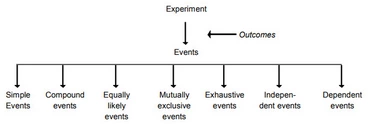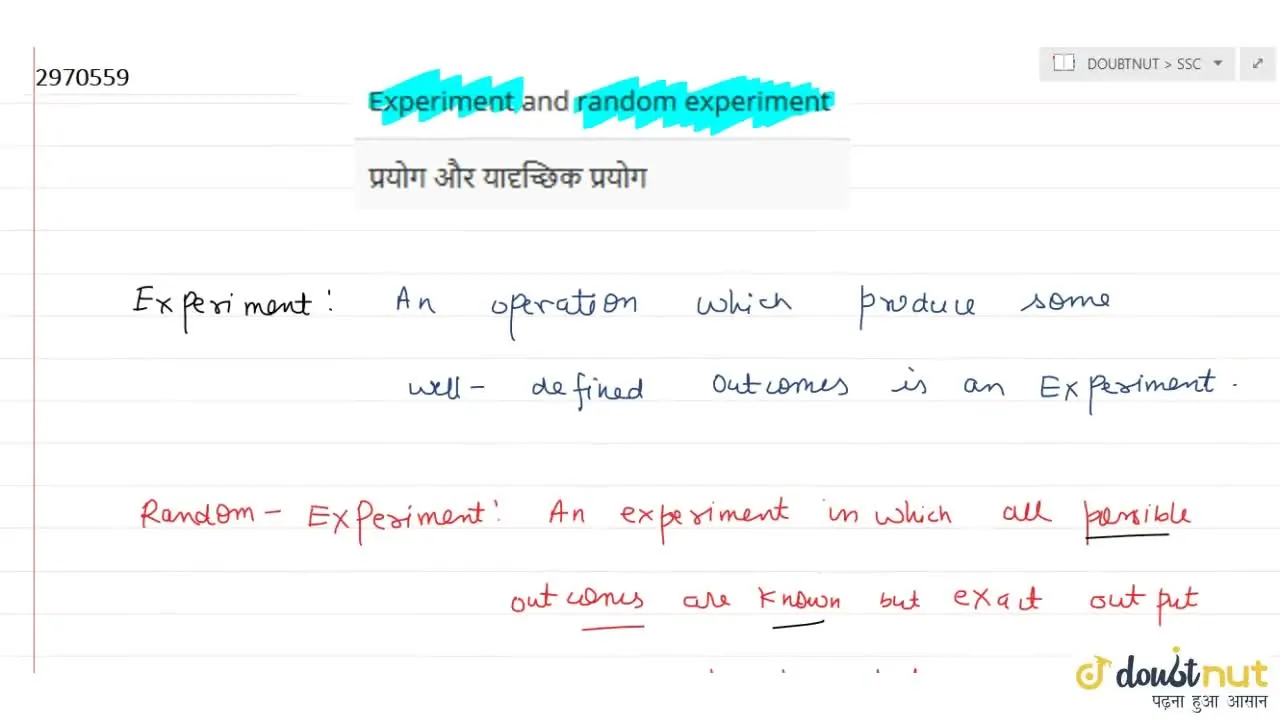Experiment and random experiment
Designed Experiment
Statistics is a subject that deals with the study of calculating, gathering, observing and interpreting the numerical data. It can be said that it is full of research and experiments. An ordered procedure which is performed with the right objective of determining, or verifying the validity of the hypothesis is called a statistical experiment. Some specific questions need to be clearly identified for which the experiment is intended. So, to minimize the variability effect, it is important to design the experiment. So, designing the experiments needs to be done by the researcher for the purpose of improvement of precision. This is known as design of experiments (DOE) or experimental designs. In this chapter, emphasis will be provided on the definition and example of experimental design.
Definition of Designed Experiment
In Statistics, the Designed Experiment is referred to the design of an experiment that contains gathered information where a variation might be present or not. It is important to perform under the full control of the researcher. Basically, it is used for controlled experiments. It helps in minimizing the variable effects to increase the reliability of results. Regarding this design, the experimental unit process may include a group of animals, plants, and people.
Types of Designed Experiments
It is to be noted that there are three different types of Designed Experiments which are as follows:
- Pre-experimental Research Design
- True-experimental Research Design
- Quasi-Experimental Research Design
Pre-experimental Research Design
The pre-experimental research design is considered to be the simplest form of experimental research. Various groups are kept under observations in this method. Later on, the cause and effect are recognized. This is done to gather the right information as to whether the targeted groups need further investigations or not. This process is, therefore, quite cost-effective. There are three types of methods that are involved in this type of experimental research.
- Static Group Comparison
- One-shot Case Study Experimental Research Design
- One-group Pretest-posttest Experimental Research Design
True-experimental Research Design
This research design relies on the statistical hypothesis that is conducted to prove or disprove the hypothesis. It is considered to be the most accurate form of experimental research design. It is mostly used in Physical Science. This experiment helps in establishing the cause and effect relationships. Some factors are needed to be satisfied in this method which is as follows:
- Random variable
- The researcher can manipulate the variable
- Control Groups
- Experimental Group
Quasi-Experimental Design
When it comes to the Quasi-Experimental Design, it is found to be similar to the true experimental design. However, it can be seen that there are some differences between the two.
Regarding the true experiment design, random assignment is provided to the participants. Therefore, in this case, there are equal chances for every unit to get into the experimental group. On the other hand, in a Quasi-Experimental design, random assignment is not assigned to the participants of the groups. So, in this case, a cause or effect conclusion cannot be made by the researcher.
Two other methods are used in the research process apart from these types of experimental design research. They are randomized block design and completely randomized design.
Randomized block design
There are times when a researcher has a clear understanding of the distinct difference among the group of objects. So, in such cases, preference is made to the randomized block design. The experimental units are divided into subgroups of similar categories. There is a random assignment done for those groups for the treatment.
When the drug testing experiment is done, age is considered to be the most significant factor as believed by the researcher. For this reason, the units are divided following the age groups like:
- Under 15 years old
- 15 – 35 years old
- 36 – 55 years old
- Over 55 years old
Completely Randomized Design
This is considered to be the simplest type of experimental design. In this completely randomized design, assignments to the treatment groups are randomly assigned. When we look at the advantage of this method, it helps in avoiding the bias and controls the role of chance. This method allows the use of probability for which it provides a solid foundation for the Statistical analysis.
Related Videos:
Application of Experimental Design
The application of experimental design is made to Natural Science, Engineering as well as Social Science. The experimental designs are used in the following areas:
- Natural experiments
- Computer programs
- Opinion polls
- Evaluation of physical structures, materials and components
- Chemical formulations
- Statistical surveys
Random Experiment
In order to understand this type of experiment, we will provide you with an example. Suppose you toss a fair coin up in the air, then you can only expect to get two possible outcomes like a head or a tail. You can never predict as to whether you would get head or tail of the tossed coin. When it comes to the mathematical theory, those experiments or observations are considered as the set of possible outcomes are known. But it is impossible to predict a particular outcome. So, by carrying out such experiments, the set of all possible results are known but not possible to predict one at any particular execution is known as a random experiment.
Random Experiment – Types of Events
The following types of events are possible in a random experiment.

-
Simple and Compound Events: These events cannot decompose further. In this case, we can take for example of a tossed coin where there are only two possible outcomes (either head or tail.)
-
Equally Likely Events: Here, in this event, it cannot be expected as to either one to occur in preference in the same experiment. For example, there are six equally likely events when you roll a six-sided dice.
-
Mutually Exclusive Events: When the occurrence of one event prevents the occurrence of any other event, it is known as mutually exclusive events.
-
Independent Events: An event is said to be independent when the outcome of one does not affect the outcome of the other.
-
Dependent Events: When the occurrence or non-occurrence of one in any trial affects the probability of the other events, it is known as dependent events.
Important Chapters:

Simple and Compound Events: These events cannot decompose further. In this case, we can take for example of a tossed coin where there are only two possible outcomes (either head or tail.)
Equally Likely Events: Here, in this event, it cannot be expected as to either one to occur in preference in the same experiment. For example, there are six equally likely events when you roll a six-sided dice.
Mutually Exclusive Events: When the occurrence of one event prevents the occurrence of any other event, it is known as mutually exclusive events.
Independent Events: An event is said to be independent when the outcome of one does not affect the outcome of the other.
Dependent Events: When the occurrence or non-occurrence of one in any trial affects the probability of the other events, it is known as dependent events.
Similar Questions
If E is any event of a random experiment then the probability of the event E belongs to
View SolutionWhat is sum of the probablities of all the possible events of a random experiment ?
View SolutionIF A and B are independent events of a random experiment such that P(A∩B)=16 and P(¯¯¯A∩¯¯¯B)=13 , then P(A) is equal to
View SolutionIf AandB are independent events of a random experiment such that P(A∩B)=16andP(¯¯¯A∩¯¯¯B)=13 then P(A)=
View SolutionIf AandB are independent events of a random experiment such that P(A∩B)=16andP(¯¯¯A∩¯¯¯B)=13 then P(A)=
View SolutionIf A and B are two events of a random experiment such that P(A)=0.6,P(B)=0.3 and P(AB)=0.5 then P(¯¯¯B¯¯¯A)=
View SolutionIf A and B are events of a random experiment such that P(A∪B)=45,P(¯¯¯A∪¯¯¯B)=710 and P(B)=25, then P(A)=
View SolutionIf 1+3p3,14 and 1−2p2 are probabilities of mutually exclusive events of a random experiment then the range ofp is
View SolutionLet A and B be two mutually exclusive events of a random experiment such that P(not A) = 0.65 and P(AorB)=0.65, find P(B).
View SolutionWhich of the following is not a random experiment?
View Solution


